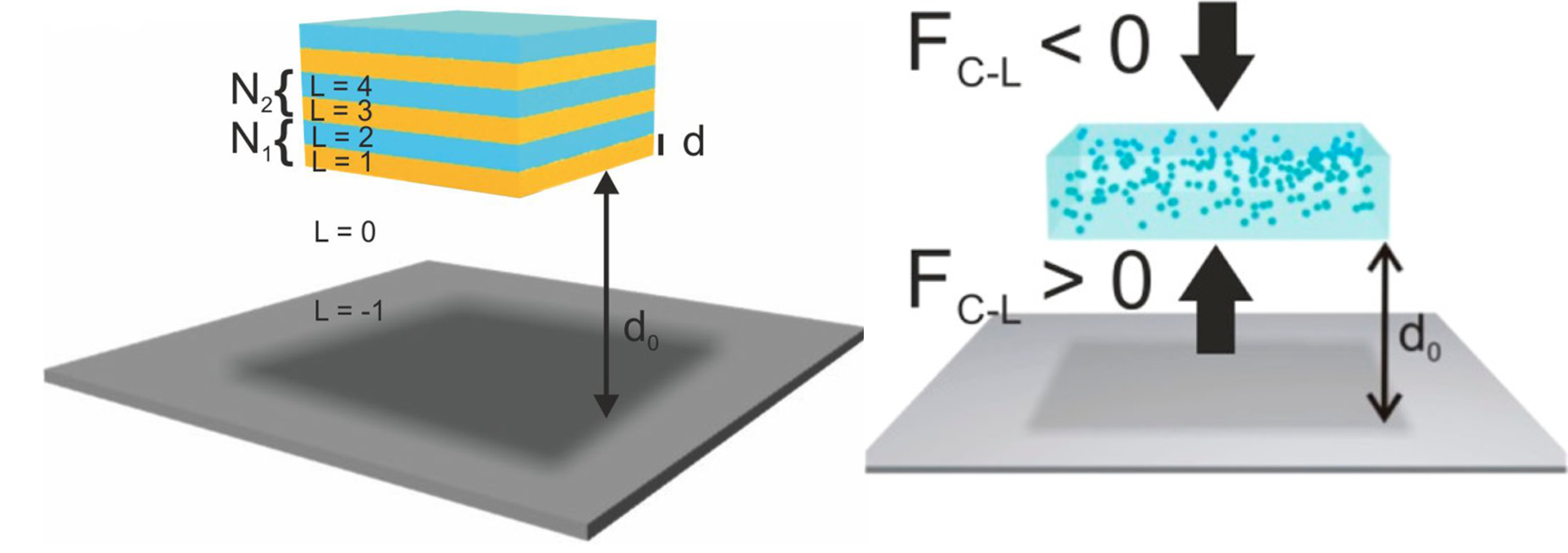Research
Our Vision
The research carried out in the Multifunctional Optical Materials group combines the generation of new fundamental knowledge in materials chemistry and physics with its application to different technologies in which light management plays a decisive role, such as solar energy conversion, light emitting devices or sensing.
Our Materials
We combine diverse synthetic and processing techniques, such as nanoparticle synthesis, solution based coating, chemical vapor deposition or vacuum thermal evaporation, to develop a large variety of photonic structures (photonic crystals, plasmonic arrays, diffracting surfaces, optical resonators…), with a wide range of compositions, displaying enhanced optical properties
Our Approach
Our methodological approach covers materials computational design, fabrication, advanced optical characterization and, eventually, device integration.
Research Lines
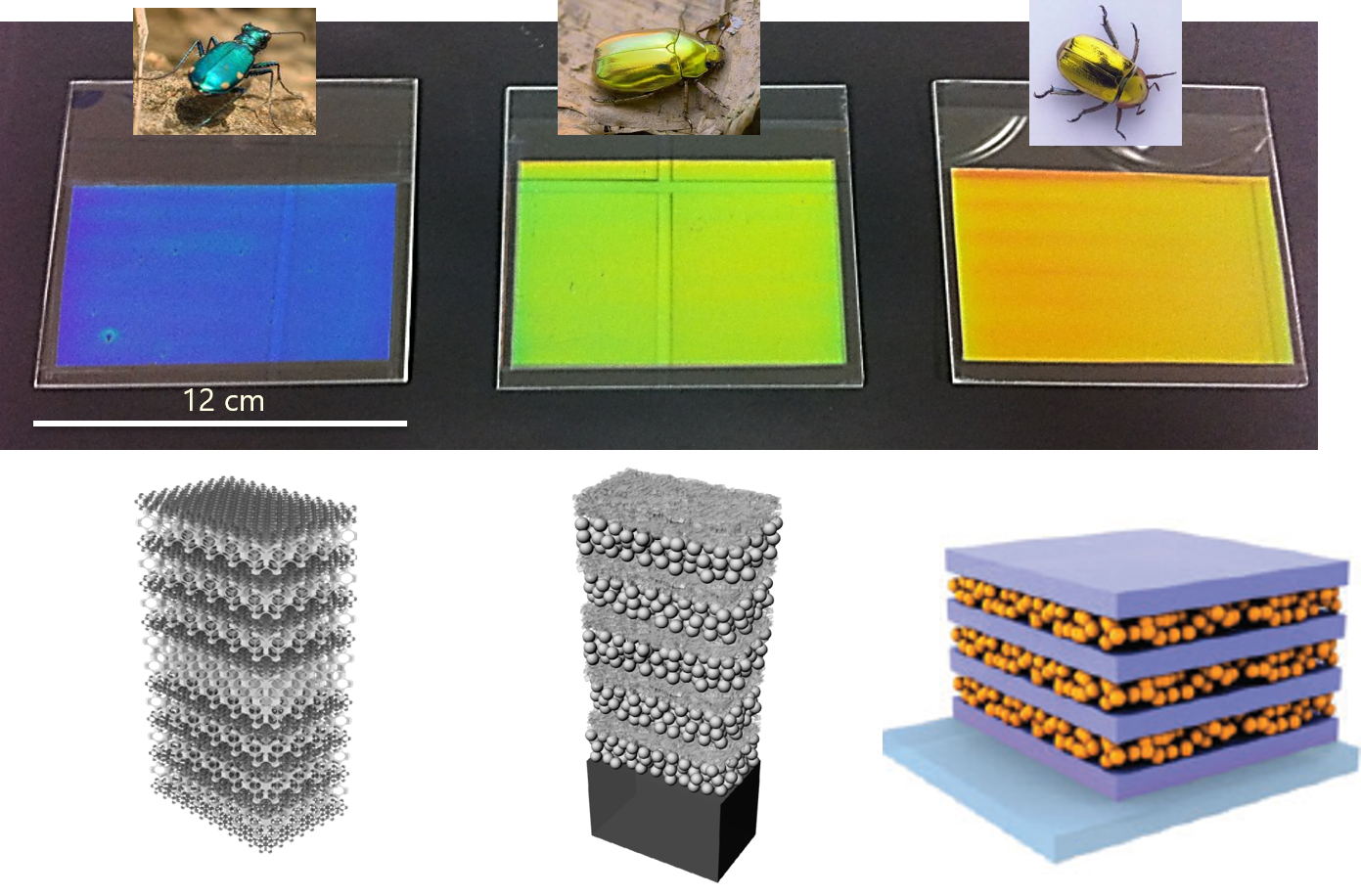
Development of novel photonic structures from nanoparticle building blocks
Transversal to all our research is the use of nanoparticles as building blocks to attain photonic structures. This concept, further extended to other types of nanomaterials, is distinctive from our group and allows us both to attain structural color from a wide range of materials and to provide our optical materials with other functionalities, such as controlled porosity, large specific surface area or enhanced mechanical properties.
Photophysical analysis of perovskite materials
The processes determining the photophysics of canonical perovskite materials (bulk films, single crystals, quantum dots) are studied in our group by performing advanced optical characterization under highly controlled chemical environments and ultrafast spectroscopy.
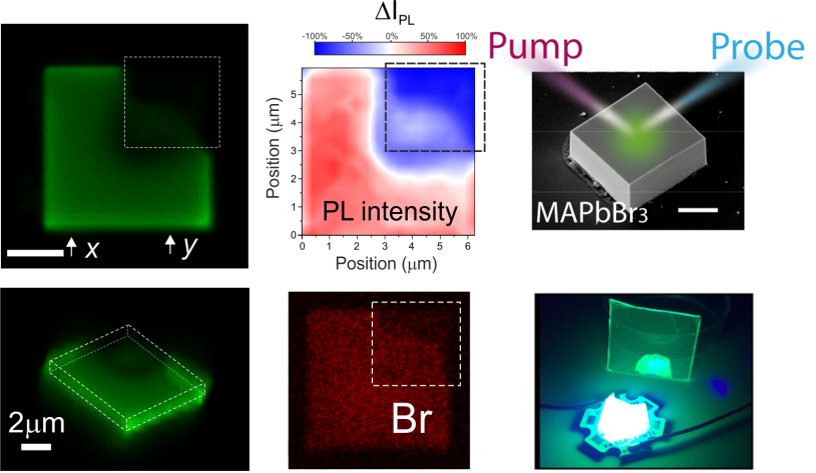
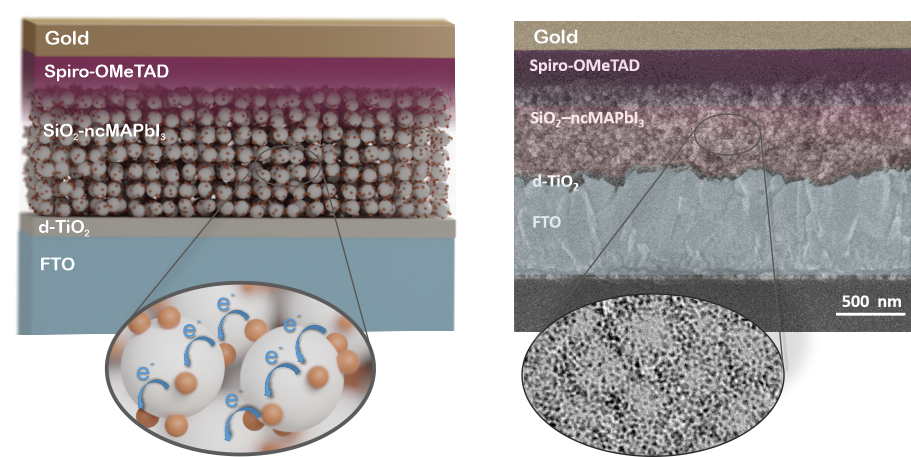
Ligand-free perovskite quantum dots optoelectronics
Synthesis of perovskite nanocrystals within the void network of porous scaffolds of optical quality (i.e., scattering free) allows us to attain optical quality films containing a solid dispersion of ligand-free quantum dots, suitable to study a wide diversity of fundamental processes and amenable to integration in optoelectronic devices (solar cells, LEDs) with enhanced stability.
Photonic design of nanophosphor based materials and devices
Implementation of photonic structures into phosphor based materials employed for illumination or signaling implies a major challenge. Motivated by the great potential optical design offer in this field, our group addresses this challenge by using nanophosphors to build different types of optical materials, which show enhanced performance and versatility.
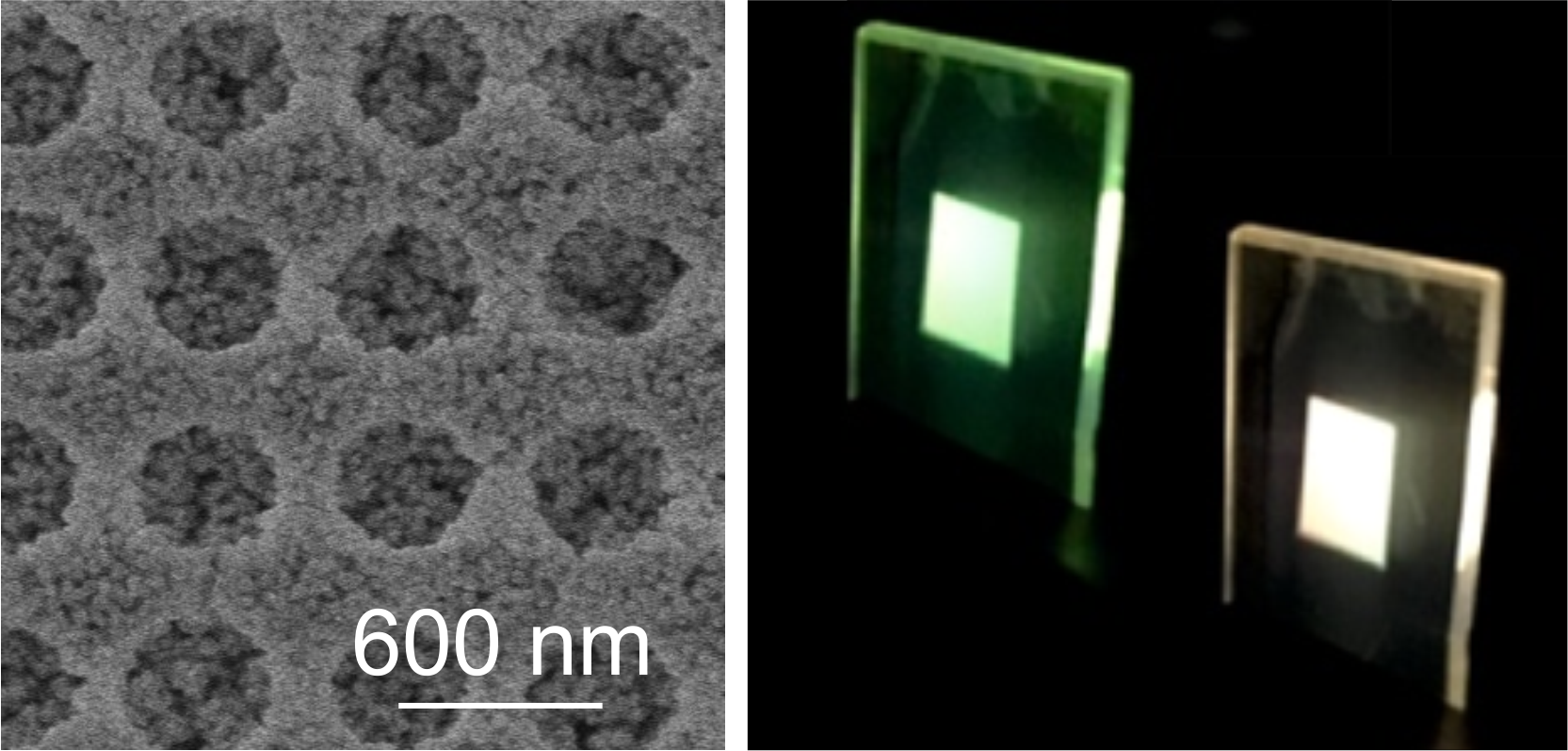
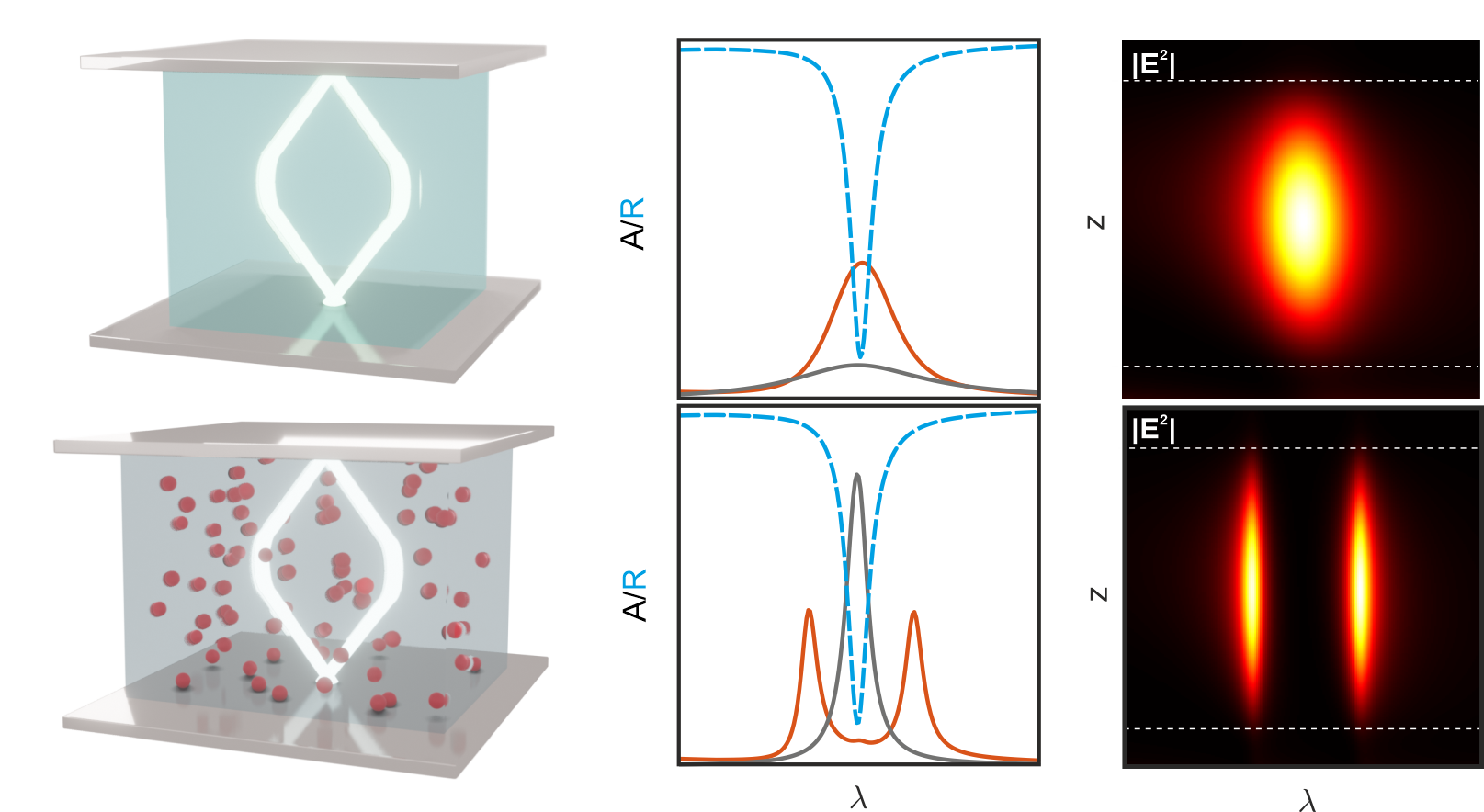
Strong light-matter coupling in optoelectronic materials
Strong coupling between matter states and optical modes gives rise to a reconfiguration of the electronic and photonic structure of the ensemble, which must be now described by hybrid light-matter states, also known as polaritons. Our group studies the effect of polariton formation on the properties of different optoelectronic materials (solar dyes, quantum dots…) and its implications in device performance.
Novel fundamental phenomena involving Casimir-Lifshitz forces
Our group investigates different approaches based on optical materials to discover new ways to control this fundamental interaction, leading to the observation of exotic and intriguing phenomena like levitation and quantum trapping.
